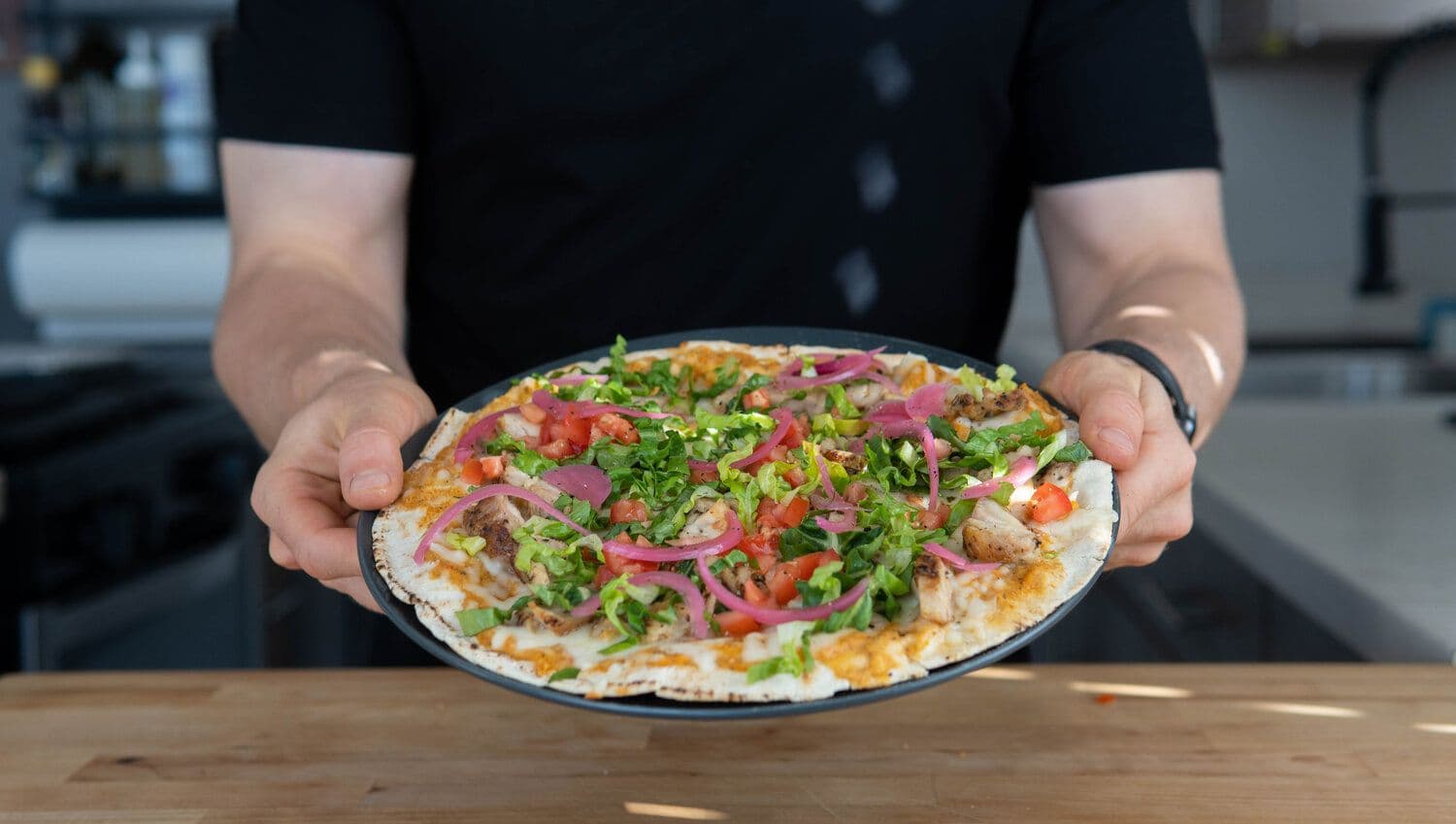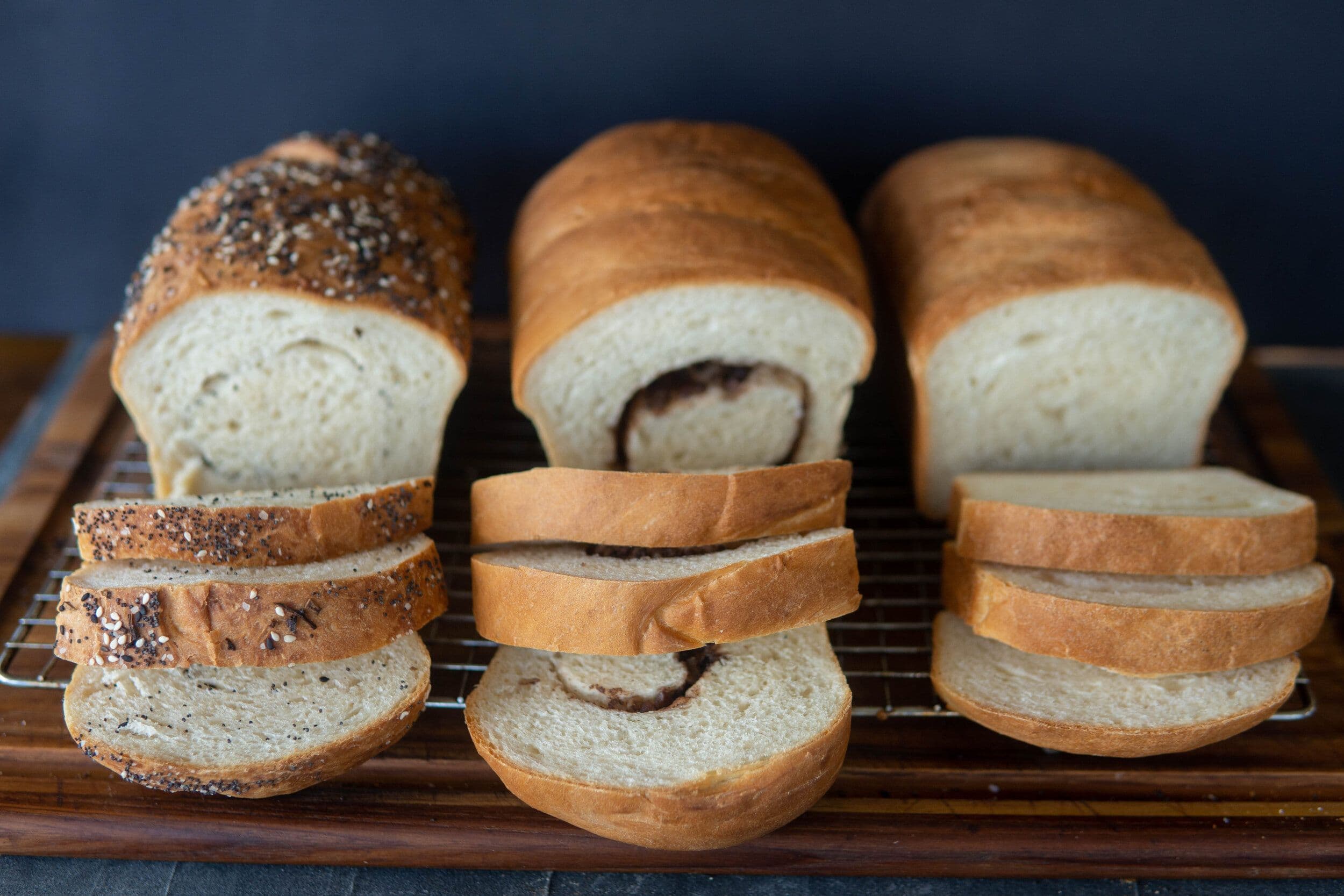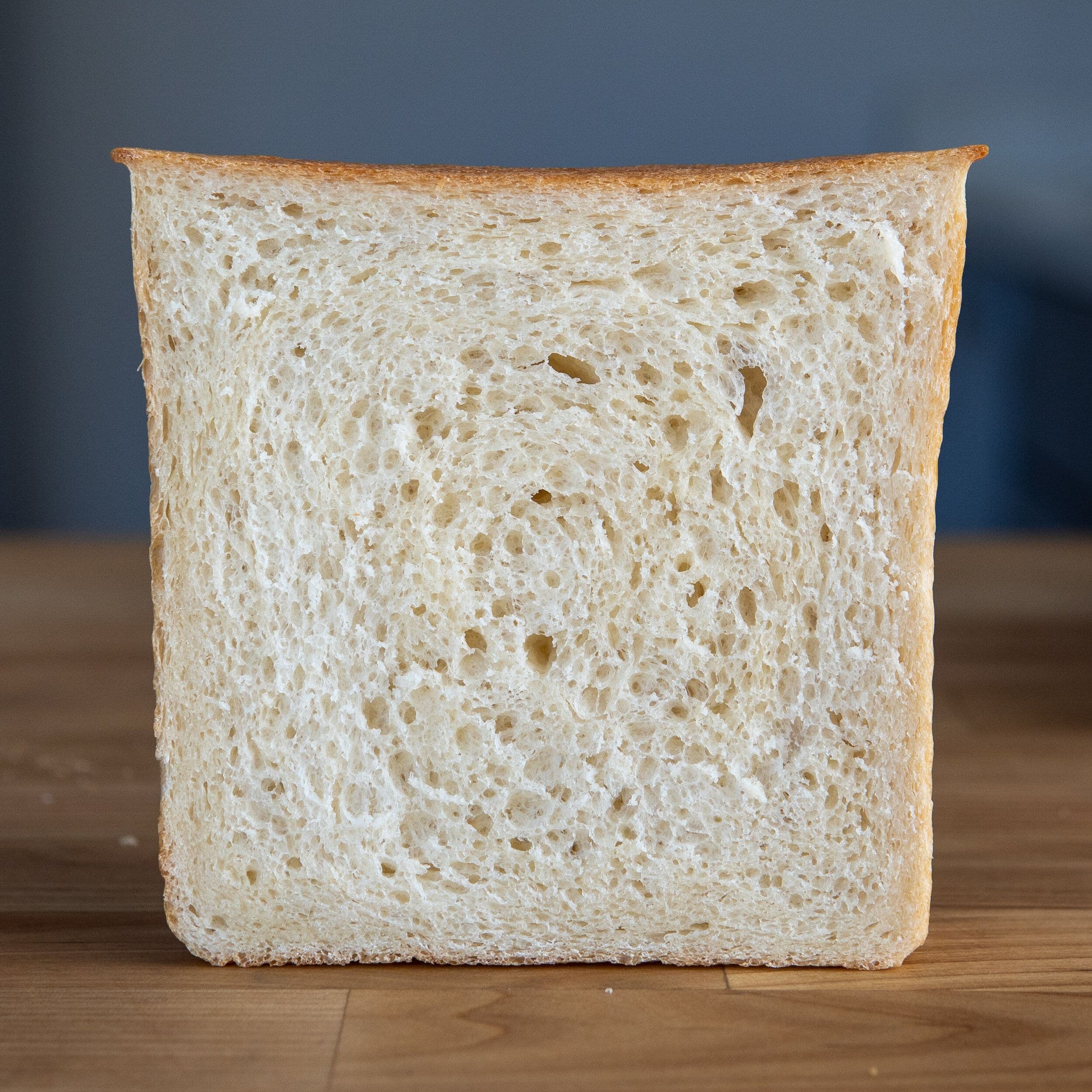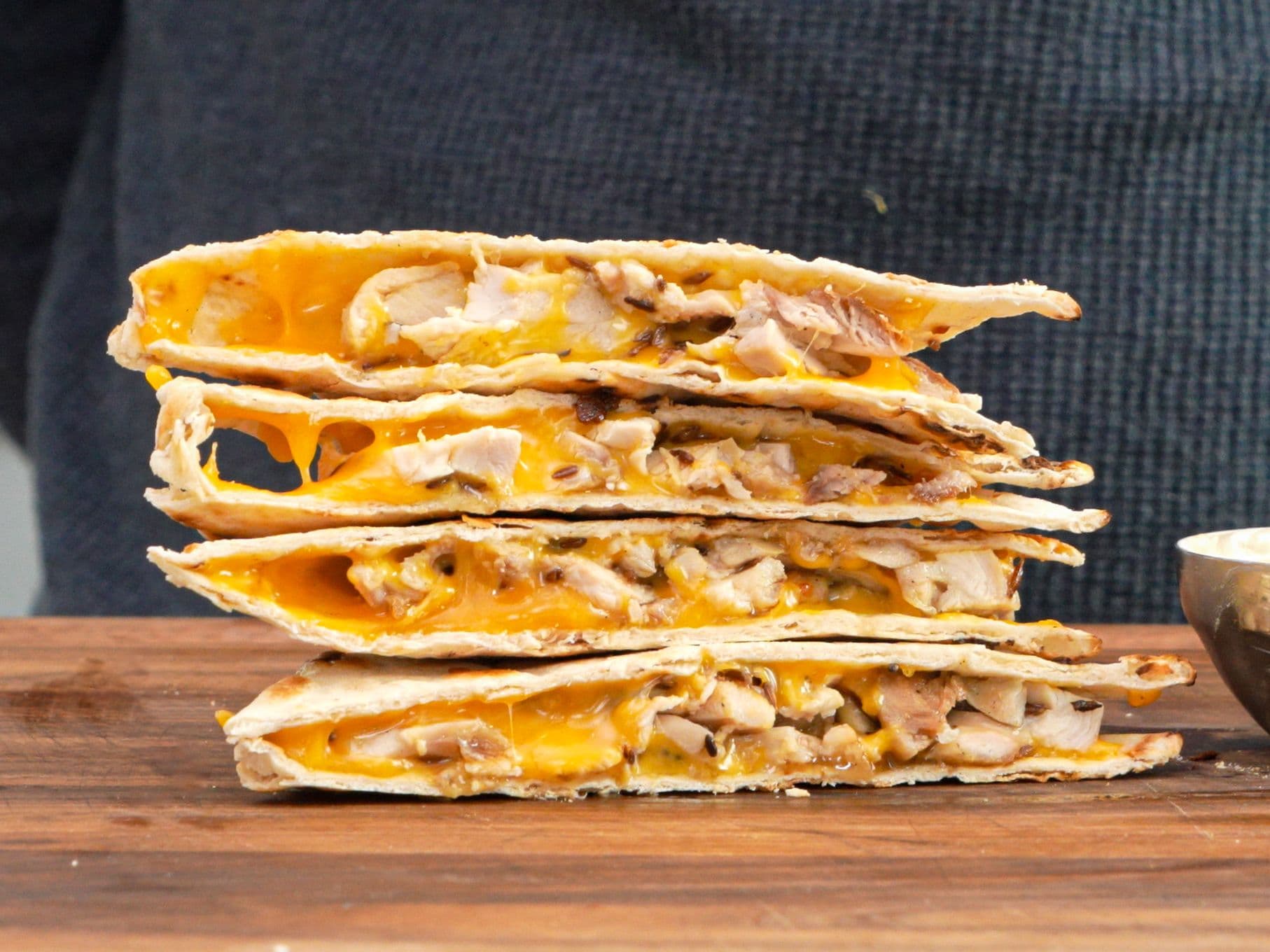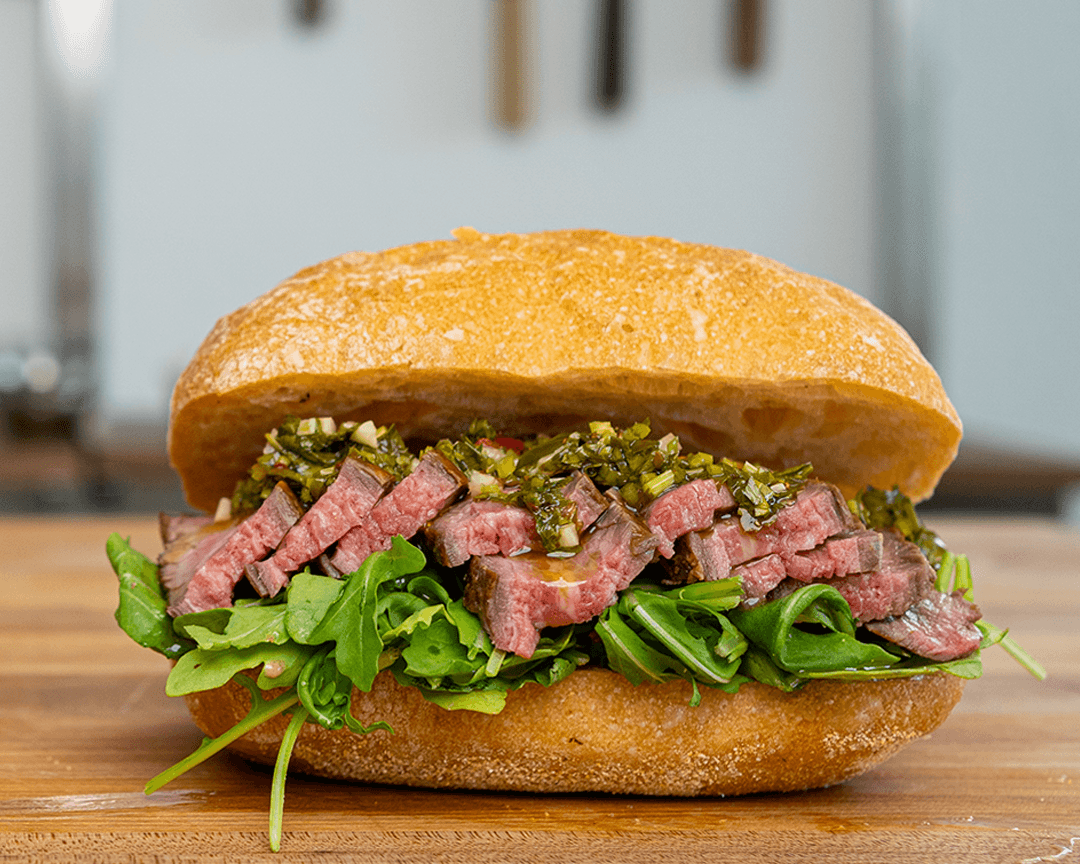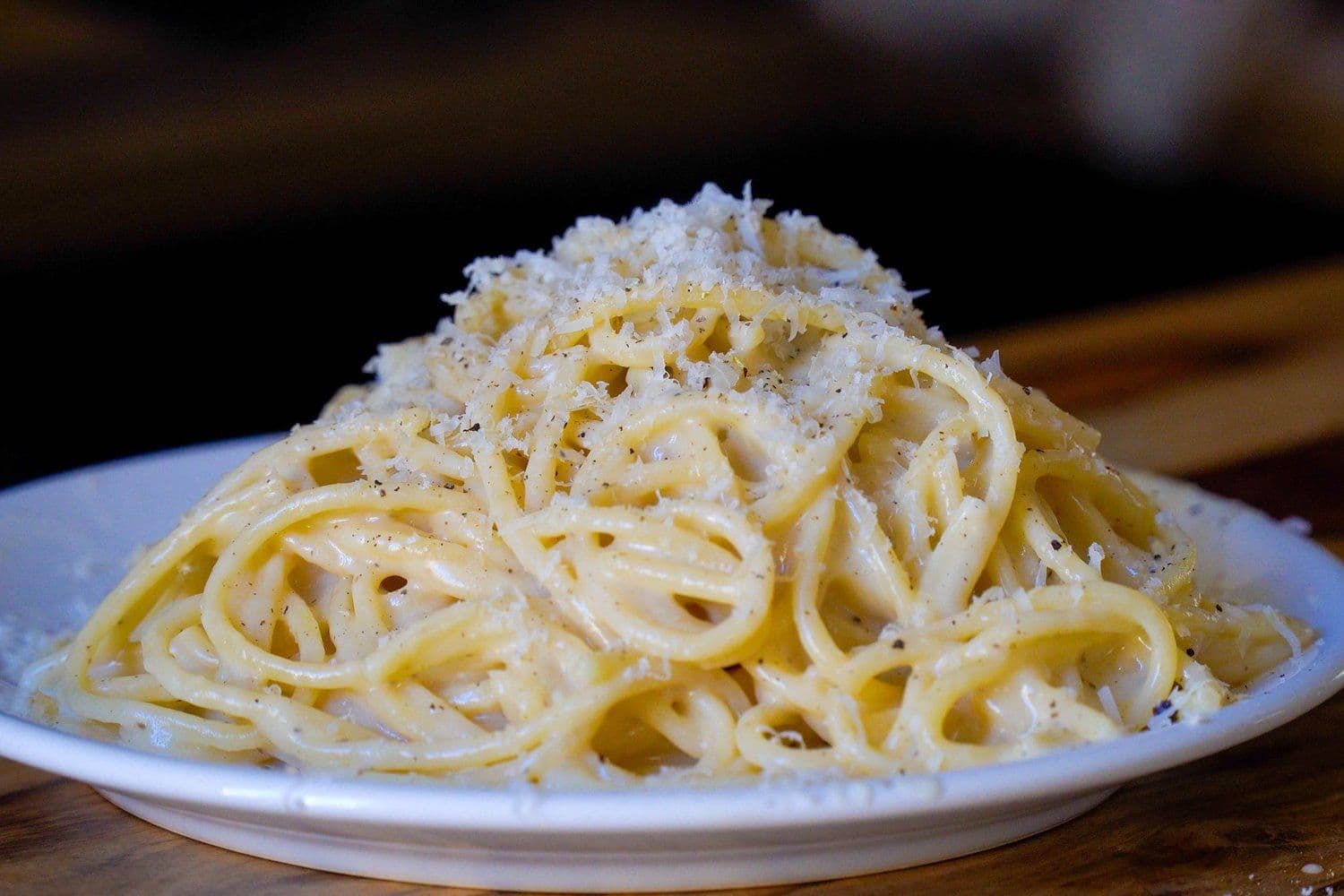Focaccia
Focaccia is a bread that everyone should know how to make. The thin crust and soft interior make this a versatile bread for eating or sandwiches.
 By Ethan Chlebowski
By Ethan ChlebowskiThis is a 75% hydration dough recipe, which leads to a super airy crumb. This higher-hydration dough can be stickier to work with.

Ethan Chlebowski
Ingredients
Dough
- yeast9 g
- water, warm, around 105-115°F335 g
- bread flour, or all-purpose450 g
- salt9 g
- extra virgin olive oil9 g
For baking
- 9x13 baking dish
- extra virgin olive oil20 g + a drizzle
- water20 g
Optional toppings
- flaky salt
- rosemary, or other herbs
Method
Step 1: Mix the ingredients
Add the yeast to the warm water along with a spoonful of the flour. Stir until dissolved. Let stand for 5-10 minutes until light foam surfaces and little bubbles are visible.
- Note: Proofing is done to test the viability of the yeast. If there is no foam surface or little bubbles the yeast is likely dead and should be discarded for new yeast.
Meanwhile, add the flour, and salt to a large mixing bowl. Once the yeast is proofed, pour in the mixture and mix the dough with your hands until no dry flour remains in the bowl and a cohesive mass forms.
- The dough will be very sticky. Pour the olive oil over the dough, and work together until the oil is absorbed. Cover and let rest for 20 minutes.
Step 2: Bulk fermentation & gluten development
Once rested, perform a stretch-and-fold by grabbing a corner of the dough in the bowl, lift straight up to stretch the dough as high as it will go without tearing, and fold over to the other side. Rotate the bowl and perform three more reps of stretch-and-folds. Once folded, turn the dough over onto itself, cover, and let rest for another 25-30 minutes.
- This is one set of stretch-and-folds, perform 3 more sets with 25-30 minutes of rest in between.
For each stretch and fold set, the dough should feel more elastic and stretch further without tearing with some air bubbles present.
- Note: The stretch and fold method is better suited than for a high-hydration dough such as this because the dough is naturally sticky and this method reduces hand contact. Additionally, the stretch and fold will allow for an open crumb when baked because the air isn’t pushed out of the dough.
Step 3: Proofing (second ferment)
Drizzle olive oil into a 9x13 baking pan until the bottom is covered. After the last stretch and fold, turn the focaccia dough into the pan and gently work it to the edges.
- Note: If the dough is springing back from the edges, cover and let rest for 15-20 minutes before gently working it to the edges.
Cover the pan and let the focaccia proof for 45-60 minutes. At the end of proofing, the dough should be well-risen and puffy with gas bubbles.
Preheat the oven to 450°F/232°C.
Step 4: Dimple & add toppings
Dimple the proofed dough with wet fingers by gently pushing to the bottom of the pan, but do not accidentally go through the dough.
- For me, I like lots of dimples and run over the dough 2-3 times.
Whisk the remaining 20 g of olive oil and water together with a fork until it , about 2-3 minutes. Evenly pour the mixture over the focaccia where it will pool into the dimples.
Sprinkle flaky salt and fresh herbs over the top. If using other toppings, add them now too, and gently press into the dough.
- Note: This turns into a great pizza with sauce, cheese, and anything else you may have in the fridge!
Step 5: Bake
Place on the middle rack of the oven and for 20-25 minutes until golden on top. Let rest under a cloth on a wire rack for 5 minutes before slicing into hunks of focaccia
- Serve as is, or slice in half for sandwiches.
Enjoy.
FAQ
Also Appears In

Free Spice Guide
Join The Mouthful Newsletter to receive our essential spices list pdf.
Just subscribe to our weekly newsletter where 60,000+ readers get lifestyle protocols, recipe frameworks, Q&A from expert home cooks, and cooking trends explained.
We hate spam too. Unsubscribe anytime.


